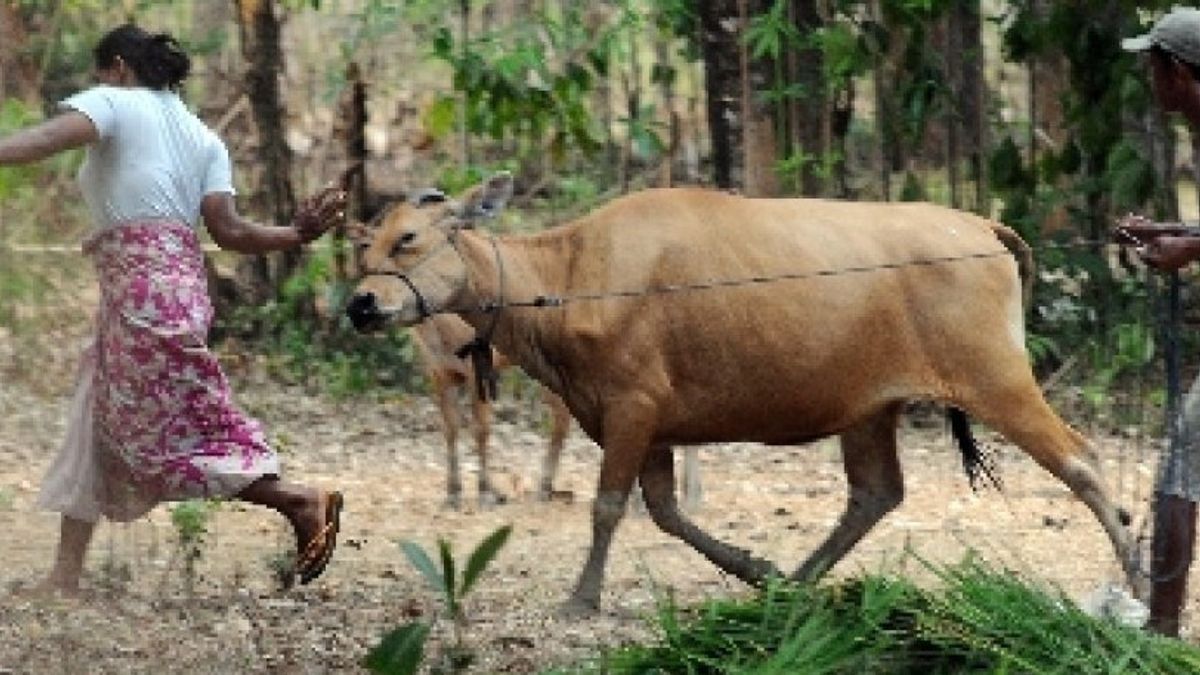YOGYAKARTA - Antraks is one of the diseases that attacks animals that can also be transmitted to humans. The disease of these animals is in grass-eating animals and some wild animals. Antracese disease which has the standard word Anthrax is classified as an occupational disease. Also referred to as a soil disease.
Antraks is contagious to humans who are in direct contact with animals affected by the virus. It had gone viral on Mount Kidul Yogyakarta related to this disease after Lebaran Hajj in 2023. This disease has actually been very long, it was very scary before the COVID-19, even many farmers were burned by their livestock because of this animal.
Antractic diseases are caused by the bacteria of Bacillus anthracis. These bacteria are positive gram stem bacteria, are aerob (facultative anaerob), can form a spora if they are in poor environmental conditions.
Usually antraces develop in certain temperatures which result in rapid transmission. Antraks itself originates from soil channeled through the digestive tract in animals and transmits to humans. Antrax in soil can last up to 40 years.
This is certainly one of the focuses of stopping antraks disease. Antraks thrives through its basics. Basil Anthrax can produce buildings that cause death even though treatment has been done with antibiotics.
In the past, antracks was considered unable to develop in tropical climates, but it turns out that antracks can actually grow as happened in Gunung Kidul after Eid al-Administrative Area 2023. This happened because the intensity between manusa and livestock increased.
Diseases arise enzootically at certain times of the year with a limited location called Anthrax endemic Region.
It was recorded that there are 14 provinces that have endemic Anthrax areas, namely West Sumatra, Jambi, West Java, Central Java, DKI Jakarta, South Sulawesi, Southeast Sulawesi, Central Sulawesi, West Nusa Tenggara, East Nusa Tenggara, DI Yogyakarta, East Java, West Sulawesi, and Gorontalo.
There are three types of anti-extraction diseases that are divided based on the transmission.
Anthrax's intestines caused 25-60% of patients to die. While the others recorded fewer people died.
اقرأ أيضا:
Anthrax cutaneus (slit), has the following speed
Anthrax inhalation (parua) has the following symptoms
Anthrax gastrointestinal (indication)
ANTrax disease has 3 ways of transmission, namely through skin, breathing, and digestion.
Dari penularan kulit sangat memungkinkan bahwa antraks terular dengan cara pontong seperti saat saat melakukan pengotahan hingga cutan
Through antractic breathing, we can be transmitted by inhaling (sucking) bacterial spora. Meanwhile, through digestion, it is clear that we consume the meat.
Do not slaughter sacrificial animals that are sick or grass eaters if sick, don't slaughter them. This has also been regulated in the rules for slaughtering sacrificial animals that slaughtered animals must be healthy.
What happened on Mount Kidul and parts of the area were the origin of slaughtering and for traders who sold sacrificial animals in a sick condition.
The English, Chinese, Japanese, Arabic, and French versions are automatically generated by the AI. So there may still be inaccuracies in translating, please always see Indonesian as our main language. (system supported by DigitalSiber.id)



















